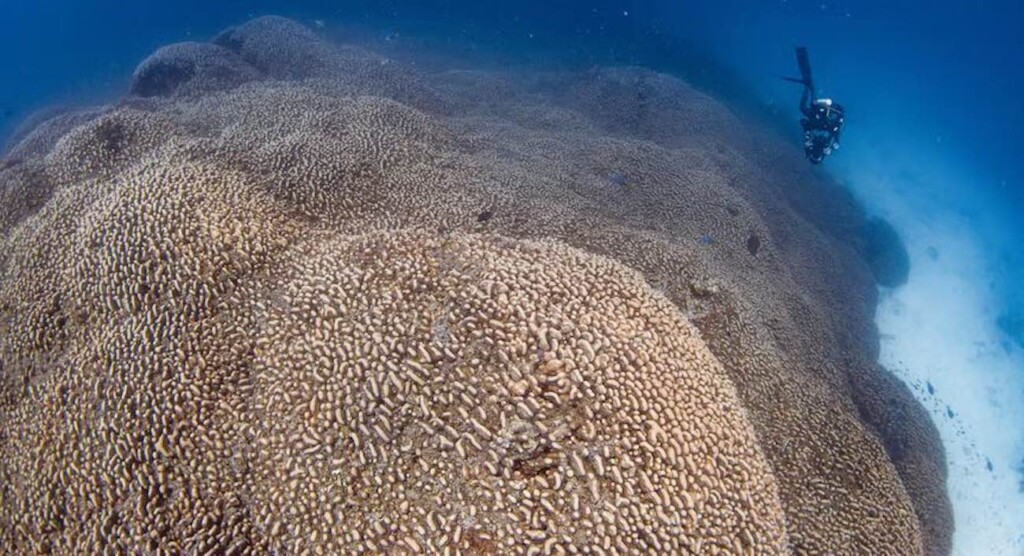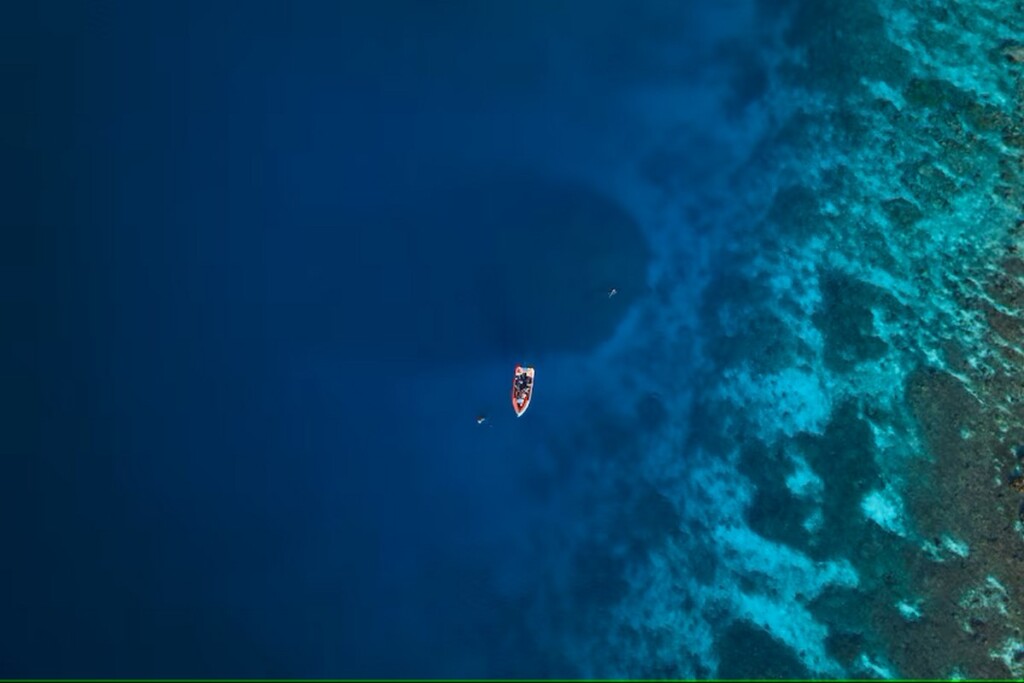 Courtesy of Manu San Félix / National Geographic Pristine Seas (cropped)
Courtesy of Manu San Félix / National Geographic Pristine Seas (cropped)On an expedition to the Solomon Islands, divers affiliated with National Geographic have found the world’s largest single coral colony ever recorded.
It’s longer than the largest blue whale. At 34 meters (111 feet) in length, and with a width of 32 (105) meters, it could sit corner to corner across 5 tennis courts.
Experts believe it has been growing for between 300 and 500 years.
The mammoth coral was discovered by scientists from National Geographic’s Pristine Seas Initiative, which aims to gather scientific data to inform conservation measures in places where marine life is bountiful. During an expedition to the Three Sisters island group in the Makira-Ulawa Province of Solomon Islands, they thought at first its massive shadow under the water was a shipwreck.
“At a time where we can observe every square inch of the land with satellites and drones, the ocean below the surface continues to hold mysteries like this one,” said National Geographic explorer in residence Enric Sala. “It was like finding the world’s tallest tree.”
Sala hopes the coral and its presentation—agonizingly short of being able to feature at the sixteenth annual conference of the parties to the Convention on Biodiversity, (COP16)—will nevertheless help spur future marine protection by demonstrating the breadth of underwater life that exists which we don’t yet know about.
 Courtesy of Manu San Félix / National Geographic Pristine Seas (cropped)
Courtesy of Manu San Félix / National Geographic Pristine Seas (cropped)ABC News Australia spoke with expedition scientist Molly Timmers, who 20 years ago dove down to see the “Big Momma” coral in American Samoa, the largest coral thought to exist until the discovery of the Solomon Islands specimen.
“While Big Momma looked like a huge scoop of ice cream plopped down on the reef, this newly discovered coral is as if the ice cream started to melt, spreading forever along the seafloor,” she said.
GOOD CORAL STORIES:
Belonging to the Pavona clavus species of stony corals, it is considered a species of Least Concern by the IUCN.
It’s mostly brown, but with patches of bright yellow, blue, and red growth. Coral is the anchor of shallow marine ecosystems, and just like trees in a forest biome, the larger and older they get, the more the ecosystem benefits. For example, the larger the coral colony, the greater its fecundity, meaning the reefs around this mega coral will benefit from a more stable reproductive cycle.
Along with providing places to hide and breed, many species of fish eat algae that grow on corals, and others eat corals themselves. Large fish like manta rays are more likely to visit the corals to get a clean, from a group of fish known as cleaners, that also clean coral reefs.
ABC News reports that this giant coral sits out of the major storm corridors in the Southern Seas, which may be one of the contributing factors to its age.
SHARE This Wonder Of Underwater Nature With Your Friends…
Source link

